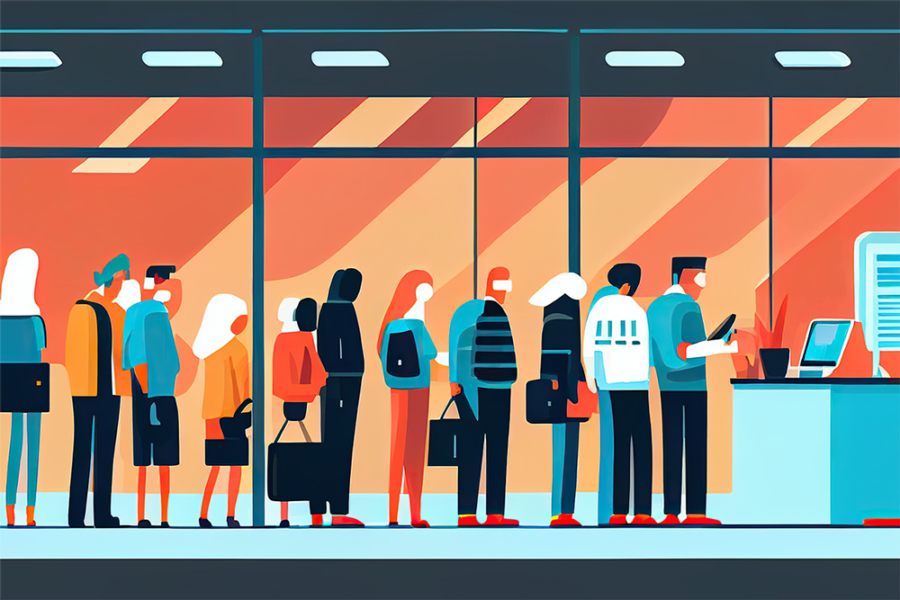Why Citizen Experience Matters – How Government Agencies Must Transform their Customers’ Experience


Every time someone goes into a retail store, visits an e-commerce site, dines in a restaurant, picks up an online order, or visits a local bank, they are exposed to ever evolving and improving experiences. Why? Because, nearly 66% of businesses that prioritize customer experience see increased retention rates. Just one of the reasons innovative private-sector companies are continually refining customer experiences and raising customer expectations to be more competitive, increase customer loyalty, and grow.
While the goals of the private sector are clearly different from those of government agencies, the audiences are the exact same people. Those private-sector customers are bringing their increased expectations to their interactions with the public sector – including your organization.
Citizen Experience Matters
These increased expectations are clearly a key factor in citizen dissatisfaction with government services being at an all-time high and the dissatisfaction is impacting local, state, and federal agencies across the nation. In fact, dissatisfied citizens are twice as likely to publicly express their disappointment and reach out for support three or more times, drastically increasing the costs associated with servicing our citizens.
On the flip side, the above article also reports, satisfied citizens are nine-times more likely to trust the government agency from whom they receive services, and agree that the agency is delivering on its mission. And further research shows meeting or exceeding citizen expectations lowers costs for government agencies, reduces negative sentiment on social and traditional media, and improves morale among public employees.
And from a broader, civic-engagement perspective, the article states citizens who are satisfied with state services are 9 percentage points more likely to vote than those who are dissatisfied.
And it’s not only state agencies experiencing these challenges. The federal government has begun taking action and the White House has even entered the process, issuing an executive order on transforming federal customer service delivery to help rebuild trust in government.
The federal government has also created – and is continually updating – a Customer Experience Toolkit. In that toolkit, they say, “Since government is often a sole-source service provider… CX is even more important in the public sector than in other organizations.”
All of this serves to truly underscore the need for government agencies to catch up with the private sector. A customer experience transformation – or, more appropriately, a citizen experience transformation – is a must.
Improving the Citizen Experience
Citizens expect to be treated like customers. And not just a customer but your most valuable customers. We need to treat them just as well as they’re treated in the best retail or hospitality environments.
But where to start?
By organizing your Citizen Experience Transformation into three phases, the process will be easier to understand, communicate, and implement across your organization.
1. Know the “Customer”
Too often, organizations (private and public) make improvements based on their perceptions of what is wrong, instead of making the improvements that customers or front-line team members know would have the largest impact.
Are there redundancies that waste time? Are specific forms cumbersome or convoluted? What frustrates citizens about your current processes? At what point in the process do you receive the most complaints? The most praise? You need to ask.
Engaging a CX research firm to conduct surveys, facilitate workshops, interview citizens as well as team members, study the customer journey, and dig for insights, our team can help your team identify pain points, attitudes, behaviors, and perceptions of each customer segment at every touchpoint. The results of this research will truly allow you to identify what’s wrong and what needs fixed.
Benefits:
- Understanding the end-to-end CX journey helps you break down silos and build alignment across teams and departments.
- Implementing customer-centric mindsets enables you to prioritize the work that will make the biggest impact.
Examining the alignment between the citizen experience and both the organizational experience and the organization’s existing capabilities helps you identify and fill experience gaps and maximize the impact of each effort.
Your Citizen Transformation begins here with all other improvements stemming from what your actual customers truly care about.
2. Prioritize Citizen-Facing Improvements
While the first phase of this transformation will help you identify what improvements need to be made, it won’t immediately tell you which ones to make first.
By starting with improvements that will directly affect your citizens, you can make the biggest impact in the shortest amount of time, often with the smallest investment. These enhancements will prove that you are committed to the people you serve, and those people will realize and appreciate the improvements.
Then, once you’ve made those initial improvements, keep the momentum going.
To continually and consistently deliver great experiences across your organization, you must…
- define and implement standards to manage design processes, content creation, and ongoing customer journey work.
- align metrics to your citizen experience vision.
- systematically distribute relevant insights across teams to trigger continuous action.
Benefits:
- Prioritizing the most important journeys and opportunities for improvement within those journeys drives up citizen satisfaction and trust.
- Continually studying citizen needs and using relevant data to enhance services creates a culture of continuous improvement.
- Effective, efficient, and repeatable processes for creating and maintaining high-quality content and design enables simplified, meaningful, and ultimately more effective interactions for the citizens your organization serves.
Organizing your improvements and creating repeatable processes along the way helps to drive an ongoing Citizen Experience Transformation effort.
3. Ensure Mobility and Accessibility
This step might seem obvious since it is the law, but when online and in-person processes haven’t been updated or studied in a while, mobility and accessibility often suffer. The processes might have met the standards and industry norms when they were created, but there’s a good chance they no longer do.
By focusing on connectivity across the end-to-end experience, your organization can create inclusive, accessible, and consistent experiences for citizens in their channel of choice.
Benefits:
- Inclusive design, comprehensive research practices, and high accessibility standards ensure every citizen has a positive experience and equal access to the services you provide.
- Technology that creates consistent experiences drives adoption of digital solutions and increases satisfaction.
- Optimizing accessibility can increase engagement levels for many of our most vulnerable citizens.
- Increased mobility and accessibility raise trust and reduce the overall service expense.
Shifting Mindsets is the First Step
To move beyond just a digital transformation and achieve a true Citizen Experience Transformation, everyone across your organization needs to understand the importance, embrace the guiding principles, and be empowered to realize the benefits of that transformation.
But it’s more than just a mindset shift. There are proven processes – applied in both the public and private sectors – to successfully implement CX transformation.
At first, this transformation and these processes might seem daunting, but the secret is to just get started and take that first step.
Here are two examples.
These two clients followed similar processes with our team to achieve their CX-transformation objectives.
The Ohio Bureau of Worker’s Compensation wanted to improve its citizen experience, but wasn’t sure how to best gather and incorporate user feedback in these improvements. Through internal and external one-on-one interviews, audits of existing assets, and web page prioritization, we helped the BWC achieve a clear understanding of key customers’ journeys, their pain points, and opportunity areas. Plus BWC now has best practices they can repeatably use based on current gaps, staffing needs, and technical support.
Our Fortune 500 insurance client needed to update two of its products, and wanted to do so through a CX lens. This transformation is already leading to more than just better products. By shifting from a development-minded process to a customer-focused outcomes-based process, we’ve been able to help them incorporate more impactful enhancements. And with the new CX processes, they’ve established a customer-centric culture that is driving innovation.
Start Your Citizen Experience Transformation Now
By simply checking boxes of state-mandated improvements, an organization can achieve a beneficial digital transformation. Or, by fully embracing the real reason behind these mandates, you can achieve a Citizen Experience Transformation that multiplies the positive impact you make on the people you serve.
If you’d like to learn more about how a Citizen Experience Transformation can further your organization’s mission, please reach out. We’d love to hear from you.